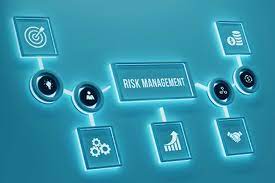As the business world has gone through a big data revolution over the last few years, more and more organizations have integrated predictive models into their processes. These models provide significant benefits and expose businesses to greater risks of operational losses. Inappropriate decision-making using bad models often leads to severe consequences. Although the stakes in managing these risks are high, model risk management technology solutions effectively reduce such risks. Let us explore why model risk management (MRM) is so vital in an organization.
How Does Model Risk Management Work?
Technology has got a significant hold over modern society in a way that it affects everyone, not just organizations. Yet, many of its parts are not as refined as they should be. When AI models control everything from manufacturing and advertising to sales and distribution, controllers want them to be at par with higher standards. One way to meet those standards is model risk management and the technological solutions it uses. It compares actual and expected results and makes the necessary changes to produce correct results frequently and accurately. If the model breaches these benchmarks, it might modify the model process to maintain its integrity.
When the actual results do not comply with the expected results, model risk management technology solutions analyze the data and models and identify the outliers. They try to pinpoint the external factors and evaluate if the models are inefficient and biased. For instance, when a manufacturing unit fails its tasks and produces goods slowly, perhaps it has poor manufacturing or the AI is not making efficient decisions. Whatever the case, MRM processes investigate and answer all these questions. Finally, it makes the necessary changes while considering the external factors and tests the model again. The cycle is repeated until it delivers the expected results.
Several Lines of Defense in Model Risk Management
While the task of MRM sounds too simple, it requires a complex network of professionals, teams, and technology solutions to achieve the desired results. Each organization should independently audit and validate each high-risk model and incentivize the potential risks to monitor them irrespective of the imposed regulations. The model risk management technology solutions consist of the following lines of defense:
- Model Owners, Users, and Developers: Since these team members have maximum exposure to the model’s working and construction, they are the first line of defense whenever something goes wrong. Although they might not be aware of the current external regulations and internal policies, they should still build models around standard requirements. That includes using appropriate algorithms to risk thresholds, prevent discrimination, and ensure compliance with the existing laws.
- Model Validation, Governance, and Oversight Team: The team consists of several team members to stress-test a model to ensure it complies with various benchmarks.
- During the Validation stage, the team tests the product to ensure it delivers the desired results accurately and timely. For AI models, the unit tests various inputs to identify outliers and double-checks the results to ensure they align with the expectations.
- The Governance team members ensure appropriate governance systems are in place.
- While the Validation team ensures that the model delivers its purpose, the Oversight team ensures that it follows compliance standards and government regulations. It checks the logic behind each decision, protects it against legal trouble, and ensures non-bias and fairness during implementation.
- Internal Audit: The Internal Audit team ensures that the models follow each process accurately and diligently. It evaluates an organization’s internal operations, including its accounting and governance. Aiming to ensure legal compliance, it maintains timely and accurate data collection and financial reporting. Internal audits also identify problems and correct lapses before they affect the results of external audits.
Model risk management is an essential process that detects, mitigates, and prevents ethical and financial risks in an organization. It monitors AI models to make fair and just decisions and deliver the desired results accurately. Model risk management technology solutions prevent PR disasters, discrimination lawsuits, and discrimination, protecting the organization from legal complications. As models become inevitable parts of the corporate future by opening gateways to fast data management and efficient automation, model risk management keeps the effects in check and ensures compliance for maximum productivity.
Read Also: Reasons Why You Should Outsource Mortgage Process
